 Football is a game that is not just about the elite at the top of the professional pyramid. Up and down the country on weekends during the season, park pitches ring to the sound of players of all shapes, sizes and abilities giving it their all at the grassroots level. Peter Roberts has recorded that story from his perspective in his book, Park Life: Four seasons of Rhondda football, and ahead of our review of it, the FBR team caught up with him.
Football is a game that is not just about the elite at the top of the professional pyramid. Up and down the country on weekends during the season, park pitches ring to the sound of players of all shapes, sizes and abilities giving it their all at the grassroots level. Peter Roberts has recorded that story from his perspective in his book, Park Life: Four seasons of Rhondda football, and ahead of our review of it, the FBR team caught up with him.
Mae pêl-droed yn gêm nad yw’n ymwneud â’r elît yn unig ar frig y pyramid proffesiynol. I fyny ac i lawr y wlad ar benwythnosau yn ystod y tymor, mae lleiniau Parc yn canu i s?n chwaraewyr o bob math, maint a gallu gan roi’r cyfan ar lefel llawr gwlad. Mae Peter Roberts wedi recordio’r stori honno o’i safbwynt yn ei lyfr, bywyd y Parc: pedwar tymor o bêl-droed Rhondda, a cyn ein hadolygiad ohoni, daliodd tîm FBR ag ef i fyny gydag ef.
Football Book Reviews (FBR): Congratulations on the publication of ‘Park Life’ – this was the first book you’ve written, so how did you find the process? Were there any particular challenges?
Llongyfarchiadau ar gyhoeddiad ‘ bywyd Parc ‘-Dyma’r llyfr cyntaf i chi ei ysgrifennu, felly sut y gwnaethoch chi ddod o hyd i’r broses? A oedd unrhyw heriau penodol?
Peter Roberts (PR): Thank you. As a complete novice author, I was not familiar with the publishing process at all and I made mistakes and suffered numerous knockbacks along the way.
However, I felt strongly that I had a proper football and community story to tell that was both relevant and relatable to amateur footballers up and down the country. So, I persevered, a skill that I learnt on the football field, and eventually the publishers Y Lolfa showed an interest. The team there were extremely helpful and instrumental in making Park Life a reality, and I am grateful to them.
Diolch. Fel un o’r awduron cyflawn, nid oeddwn yn gyfarwydd â’r broses gyhoeddi o gwbl a gwneuthum gamgymeriadau a dioddef tagfeydd niferus ar hyd y ffordd.
Fodd bynnag, teimlais yn gryf fod gennyf stori bêl-droed a chymunedol briodol i’w hadrodd a oedd yn berthnasol ac yn addas i bêl-droedwyr amatur ar hyd a lled y wlad. Felly, yr wyf yn dyfalbarhau, sgìl a ddysgais ar y cae pêl-droed, ac yn y pen draw Dangosodd y cyhoeddwyr Y lolfa ddiddordeb. Roedd y tîm yno yn hynod o gymwynasgar ac yn allweddol o ran gwneud bywyd y Parc yn realiti, ac rwy’n ddiolchgar iddynt.
FBR: The book focuses on Maindy Conservative Football Club, can you tell us a bit about the club and your association with it?
Mae’r llyfr yn canolbwyntio ar Glwb Pêl-droed Maindy, a allwch ddweud ychydig wrthym am y clwb a’ch cysylltiad ag ef?
PR: The football team was formed when a group of us who used the Maindy Con club socially approached the Club Committee with the suggestion to run a football team from there. Luckily, they agreed, and we joined the Rhondda Sunday League. As the book explains, I became player/manager despite not having any managerial experience.
The club itself is a typical workingman’s club located in a street of terraced houses in the Rhondda, South Wales.
Cafodd y tîm pêl-droed ei ffurfio pan ddaeth gr?p ohonom a ddefnyddiodd glwb Maindy Con yn gymdeithasol at bwyllgor y clwb gyda’r awgrym i redeg tîm pêl-droed oddi yno. Yn ffodus, cytunasant, ac ymunon ni â Chynghrair Sul y Rhondda. Fel yr eglura’r llyfr, deuthum yn chwaraewr/rheolwr er nad oedd gennyf unrhyw brofiad rheolaethol.
Mae’r clwb ei hun yn glwb workingman nodweddiadol sydd wedi ei leoli mewn stryd o dai teras yn y Rhondda, De Cymru.
FBR: What was the decision behind focusing on four seasons in the book and how easy was it to decide on which stories to recount?
Beth oedd y penderfyniad a oedd yn sail i ganolbwyntio ar bedwar tymor yn y llyfr a pha mor hawdd oedd hi i benderfynu ar ba straeon i adrodd?
PR: The book is an actual snapshot of four seasons and is an extension of the game-by-game summaries I gave at our end-of-season presentation nights.
It documents the ups and downs of a local grassroots football team that highlights and illustrates what Sunday League football is like – a million miles from the Premier League!
It also illustrates the camaraderie that exists within the grassroots game, detailing the post-match pub culture, as well as the football.
Mae’r llyfr yn gipolwg go iawn ar bedwar tymor ac mae’n estyniad o’r crynodebau gêm-wrth-gêm a roddais yn ein nosweithiau cyflwyno ar ddiwedd y tymor.
Mae’n nodi’r ups a’r drwg gan dîm pêl-droed lleol ar lawr gwlad sy’n amlygu ac yn darlunio beth yw pêl-droed y gynghrair ddydd Sul – miliwn o filltiroedd o’r uwch gynghrair!
Mae hefyd yn dangos y camaraderie sy’n bodoli o fewn y gêm llawr gwlad, gan fanylu ar y diwylliant dafarn ôl-gyfatebol, yn ogystal â’r bêl-droed.
FBR: Can you tell us a little about the highs and lows of playing in the Rhondda Valley and District League?
A allwch ddweud ychydig wrthym am uchafbwyntiau ac isafbwyntiau chwarae yng nghynghrair Cwm Rhondda a’r cylch?
PR: The League has a proud history, celebrating its centenary year in 2007. Like lots of local leagues, it is very competitive, and the winners of the Saturday League have the opportunity to gain promotion to the South Wales Alliance.
As the book details, we experienced some great highs, like winning the South Wales Intermediate Cup, whilst also experiencing some lows, such as having a game abandoned as we only had six players left on the pitch.
Mae gan y Gynghrair hanes balch, sy’n dathlu ei blwyddyn ganmlwyddiant ym 2007. Fel llawer o gynghreiriau lleol, mae’n gystadleuol iawn, ac mae enillwyr y Gynghrair ar ddydd Sadwrn yn cael cyfle i gael dyrchafiad i Gynghrair De Cymru.
Fel y manylion llyfr, buom yn profi uchafbwyntiau gwych, fel ennill Cwpan canolradd De Cymru, tra hefyd yn profi rhai isafbwyntiau, megis cael gêm wedi’i adael gan mai dim ond chwe chwaraewr oedd ar ôl ar y cae.
FBR: As for many towns and individuals, grassroots football is their lifeblood, how did you first get involved and what importance does it hold in your life?
Fel yn achos llawer o drefi ac unigolion, pêl-droed ar lawr gwlad yw eu hunain, sut y gwnaethoch chi gymryd rhan am y tro cyntaf a pha mor bwysig yw dal yn eich bywyd?
PR: I started playing football for Ton and Gelli Boys’ Club Under 10s. From then on, football was in my blood. I went on to play for the club at every age level from Under 10s to Under 18s. It was during this time that I played against Nathan Jones, current manager of Luton Town FC, who kindly wrote the foreword for me.
I am now 47 and have been involved with local grassroots football ever since, playing, managing, and coaching.
Currently I play for Ferndale and District Over 40s team in the Wales Veterans League. The League is a great way to keep playing and even has some ex professionals playing in it, including Lee Trundle (ex-Swansea City) and Scott Young (ex-Cardiff City).
Coaching wise I look after the Ton and Gelli Boys’ Club Under 18s team. I really enjoy this, and it is great to see the next generation of local footballers enjoying the game.
Dechreuais chwarae pêl-droed i Glwb Bechgyn ton a’r Gelli dan 10 oed. O hynny ymlaen, roedd pêl-droed yn fy ngwaed. Euthum ymlaen i chwarae i’r clwb ar bob lefel oedran o dan 10s i rai dan 18 oed. Yn ystod y cyfnod hwn y bûm yn chwarae yn erbyn Nathan Jones, rheolwr presennol clwb pêl-droed Luton Town, a ysgrifennodd y Rhagair i mi yn garedig.
Rwyf bellach yn 47 ac wedi bod yn gysylltiedig â phêl-droed lleol ar lawr gwlad byth ers hynny, yn chwarae, yn rheoli, ac yn hyfforddi.
Ar hyn o bryd rwyf yn chwarae i dîm Glynrhedynog a’r ardal dros 40au yng nghynghrair cyn-filwyr Cymru. Mae’r Gynghrair yn ffordd wych o ddal i chwarae, ac mae rhai cyn-weithwyr proffesiynol yn chwarae ynddi hyd yn oed, gan gynnwys Lee Trundle (cyn-ddinas Abertawe) a Scott Young (cyn-ddinas Caerdydd).
Hyfforddi’n ddoeth Dwi’n gofalu am dîm dan 18 clwb bechgyn ton a’r Gelli. Rwy’n mwynhau hyn yn fawr, ac mae’n wych gweld y genhedlaeth nesaf o bêl-droedwyr lleol yn mwynhau’r gêm.
FBR: What value do you think grassroots football has in general and what state is the game in at this level from your own experiences?
Yn eich barn chi, pa werth sydd gan bêl-droed ar lawr gwlad yn gyffredinol, a beth yw’r gamp ar y lefel hon o’ch profiadau chi eich hun?
PR: I cannot overemphasise the value of grassroots football, as I think it is part of the glue that holds communities together. For example, most teams play from a pub or club and the revenue generated from the after-match refreshments are often key in keeping these places open.
Grassroots is much more than just the football, and this is what I hoped to capture in Park Life.
These days, I think grassroots football is fighting a battle to survive, costs are rising and there are also so many things that compete with football. However, I have no doubt it is a battle it will win and continue to thrive.
Ni allaf orbwysleisio gwerth pêl-droed ar lawr gwlad, oherwydd credaf ei fod yn rhan o’r glud sy’n dal cymunedau at ei gilydd. Er enghraifft, mae’r rhan fwyaf o dimau’n chwarae o dafarn neu glwb ac mae’r refeniw a gynhyrchir o’r lluniaeth ar ôl y gêm yn aml yn allweddol i gadw’r lleoedd hyn ar agor.
Mae llawr gwlad yn llawer mwy na dim ond y bêl-droed, a dyma’r hyn yr oeddwn yn gobeithio ei gipio ym mywyd y Parc.
Y dyddiau hyn, rwy’n meddwl bod pêl-droed ar lawr gwlad yn ymladd brwydr i oroesi, mae costau’n codi ac mae yna hefyd gymaint o bethau sy’n cystadlu â phêl-droed. Fodd bynnag, nid oes gennyf amheuaeth ei bod yn frwydr y bydd yn ei hennill ac yn parhau i ffynnu.
FBR: We can’t avoid touching on current circumstances and the suspension of all football, what effect has this had on your own club and what in particular are you missing about football?
Ni allwn osgoi cyffwrdd â’r amgylchiadau presennol ac atal pob pêl-droed, pa effaith a gafodd hyn ar eich clwb eich hun a beth yn benodol ydych chi’n ei golli am bêl-droed?
PR: Personally, I think grassroots football is being missed far more than the professional game because of the community and camaraderie that exists at our level. I sincerely hope that everyone is back on the pitch as soon as possible.
Yn bersonol, rwy’n credu bod pêl-droed ar lawr gwlad yn cael ei cholli llawer mwy na’r gêm broffesiynol oherwydd y gymuned a’r cyfeillgarwch sy’n bodoli ar ein lefel ni. Mawr obeithiaf y bydd pawb yn ôl ar y cae cyn gynted ag y bo modd.
FBR: And, finally, you’ve presumably been a part of some big games with Maindy, but if you could have any team from the past or present face you at home who would it be?
Ac, yn olaf, mae’n debyg eich bod wedi bod yn rhan o rai gemau mawr gyda’r Maindy, ond os gallech chi gael unrhyw dîm o’r gorffennol neu’r presennol yn eich wynebu chi gartref pwy fyddai hwnnw?
PR: My team, Cardiff City!
For those who buy a copy of the book I really hope it takes readers back to their own playing days and most importantly that they find it an enjoyable read!
Park Life is available from Amazon, Waterstones and also direct from the Publishers ‘Y Lolfa’.
Fy nhîm i, Dinas Caerdydd!
I’r rhai sy’n prynu copi o’r llyfr Rwy’n gobeithio’n fawr y bydd yn mynd â darllenwyr yn ôl i’w diwrnodau chwarae eu hunain ac yn bwysicaf oll eu bod yn ei ddarllen yn bleserus!
Mae bywyd Parc ar gael gan Amazon, Waterstones a hefyd yn uniongyrchol gan y cyhoeddwyr ‘ Y lolfa ‘.
 Ahead of a review of his book, FOOTBALL>ANYTHING: How Football Has Brought Out The Worst In So Many For The Sport They “LOVE”, Football Book Reviews posed a few questions to Chris Roberts.
Ahead of a review of his book, FOOTBALL>ANYTHING: How Football Has Brought Out The Worst In So Many For The Sport They “LOVE”, Football Book Reviews posed a few questions to Chris Roberts. CR: I have self-published the book as I am raising money for a local mental health charity in Liverpool Sean’s Place https://seansplace.org.uk/ that has provided me with counselling. I used Amazon to do this as I was trying to raise as much money as possible for them and this allowed the book to receive more royalties.
CR: I have self-published the book as I am raising money for a local mental health charity in Liverpool Sean’s Place https://seansplace.org.uk/ that has provided me with counselling. I used Amazon to do this as I was trying to raise as much money as possible for them and this allowed the book to receive more royalties.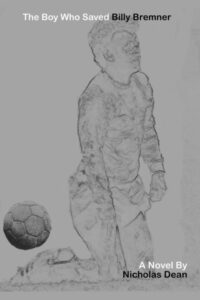 The Boy Who Saved Billy Bremner is the debut novel from Nicholas Dean. Ahead of FBR’s review of the book we caught up with the author to get the lowdown on this intriguingly titled book.
The Boy Who Saved Billy Bremner is the debut novel from Nicholas Dean. Ahead of FBR’s review of the book we caught up with the author to get the lowdown on this intriguingly titled book.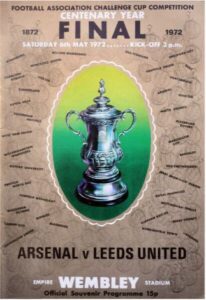 FBR: What is your first football memory and who do you support?
FBR: What is your first football memory and who do you support?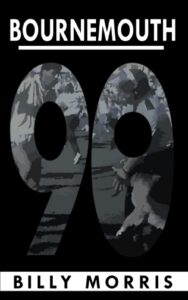 Back in November 2021 FBR reviewed
Back in November 2021 FBR reviewed 

 BM: I always loved writing at school but leaving at sixteen with a couple of O-Levels, I knew I was never going to make a living at it. I did a variety of jobs over the next thirty five years in various places around the world, then as often happens when you reach your fifties, found I had more time to spend on things I enjoyed doing, rather than things I needed to do to make money. I read a lot of crime fiction, dark stuff like James Ellroy and David Peace, and I noticed on social media that there was a real nostalgia for the eighties and nineties era in Leeds. The city has changed so much since then that its almost unrecognisable. I started to think about an Ellroy/Peace style novel set at that time in the city that I remembered back then. That’s how Bournemouth 90 came about, and I was pleasantly surprised by how well received it was. A few people asked about a sequel, and I felt there were still a few unresolved questions, which are addressed in LS92.
BM: I always loved writing at school but leaving at sixteen with a couple of O-Levels, I knew I was never going to make a living at it. I did a variety of jobs over the next thirty five years in various places around the world, then as often happens when you reach your fifties, found I had more time to spend on things I enjoyed doing, rather than things I needed to do to make money. I read a lot of crime fiction, dark stuff like James Ellroy and David Peace, and I noticed on social media that there was a real nostalgia for the eighties and nineties era in Leeds. The city has changed so much since then that its almost unrecognisable. I started to think about an Ellroy/Peace style novel set at that time in the city that I remembered back then. That’s how Bournemouth 90 came about, and I was pleasantly surprised by how well received it was. A few people asked about a sequel, and I felt there were still a few unresolved questions, which are addressed in LS92.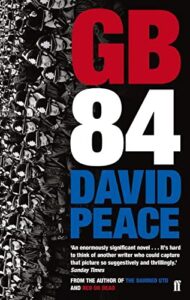 BM: As I said, I enjoy James Ellroy’s noir-style crime writing which is set in L.A. My biggest influence though is probably David Peace. Specifically the Red Riding Quartet, which transplant Ellroy’s dark style into 70s West Yorkshire. I remember reading 1974 for the first time and being totally blown away by the writing style. I enjoyed his later stuff, Damned Utd obviously and also GB84, though I’ve struggled to get into his recent Tokyo trilogy. I’ve tried to capture the feel of late eighties/early nineties in my books – a city struggling with its identity, more Merrion Market than Harvey Nicks and with LUFC struggling to shift the 80s hooligan reputation but knowing that a re-brand was vital to its future in the new millennium. To anyone who wasn’t around then, the place I describe probably feels like a different city altogether, and if that’s the case, I’ve achieved what I set out to do!
BM: As I said, I enjoy James Ellroy’s noir-style crime writing which is set in L.A. My biggest influence though is probably David Peace. Specifically the Red Riding Quartet, which transplant Ellroy’s dark style into 70s West Yorkshire. I remember reading 1974 for the first time and being totally blown away by the writing style. I enjoyed his later stuff, Damned Utd obviously and also GB84, though I’ve struggled to get into his recent Tokyo trilogy. I’ve tried to capture the feel of late eighties/early nineties in my books – a city struggling with its identity, more Merrion Market than Harvey Nicks and with LUFC struggling to shift the 80s hooligan reputation but knowing that a re-brand was vital to its future in the new millennium. To anyone who wasn’t around then, the place I describe probably feels like a different city altogether, and if that’s the case, I’ve achieved what I set out to do!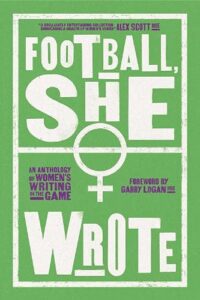 FBR has some talented contributors, none more so that Jade Craddock who has been a regular writer for FBR with her insightful book reviews and articles covering the delayed 2020 Euros and the start of the 2021/22 Premier League and Women’s Super League. Jade’s talents have been recognised with a chapter in Football She Wrote. As part of the launch of the book, FBR caught up with Jade to find out a bit more about her football and writing background. This second part of the interview looks at Jade’s connection with the game as fan and a player.
FBR has some talented contributors, none more so that Jade Craddock who has been a regular writer for FBR with her insightful book reviews and articles covering the delayed 2020 Euros and the start of the 2021/22 Premier League and Women’s Super League. Jade’s talents have been recognised with a chapter in Football She Wrote. As part of the launch of the book, FBR caught up with Jade to find out a bit more about her football and writing background. This second part of the interview looks at Jade’s connection with the game as fan and a player.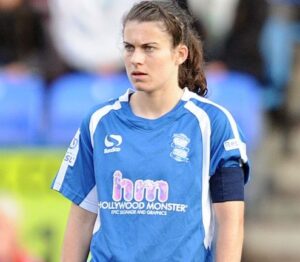
 JC: I grew up and live in the Midlands – my nearest league clubs being Birmingham City and Aston Villa, so obviously I’m an Arsenal fan! I did almost take a couple of different paths though. Villa was very much the club of choice in my school in the nineties – and that green and black Muller kit almost sold them to me, as well as the likes of Tony Daley and Dalian Atkinson, who were probably the first footballers I was really aware of. I also did work experience at Villa when I was 15 and there couldn’t be a nicer footballer than Cesc Fabregas. Alas, even Dion couldn’t sway me to the claret and blue in the end. In the late nineties when I moved to middle school, Liverpool were suddenly all the rage – it probably had something to do with those white suits?! And for a time, Liverpool were somewhat on my radar, not least because of Michael Owen’s heroics at World Cup 1998. But again, it wasn’t to be. When I started playing football myself in earnest and suddenly became much more aware of the game, began watching it religiously and understanding it as more than just a casual observer, there was really only one team at the time that played football the way I dreamt and imagined it should be played at its best – Arsenal. This was the age of Pires and Ljungberg and as a young winger myself, here were two proper attacking wingers. Add to that, the general ethos and style of play under Wenger in that period and the players in that squad and I was hooked. But one man ensured my heart was red – Cesc Fabregas. To me, he was everything that epitomised that Arsenal – stylish, intelligent, committed. He was, and remains, my favourite player. I’d always hoped he’d come back to the Emirates and thought we could have done more to bring him back when he left Barcelona, but even though he ended up at Chelsea, I always felt his heart was at Arsenal and if you took off that blue jersey there’d be a red one underneath – well, that’s what I told myself anyway!
JC: I grew up and live in the Midlands – my nearest league clubs being Birmingham City and Aston Villa, so obviously I’m an Arsenal fan! I did almost take a couple of different paths though. Villa was very much the club of choice in my school in the nineties – and that green and black Muller kit almost sold them to me, as well as the likes of Tony Daley and Dalian Atkinson, who were probably the first footballers I was really aware of. I also did work experience at Villa when I was 15 and there couldn’t be a nicer footballer than Cesc Fabregas. Alas, even Dion couldn’t sway me to the claret and blue in the end. In the late nineties when I moved to middle school, Liverpool were suddenly all the rage – it probably had something to do with those white suits?! And for a time, Liverpool were somewhat on my radar, not least because of Michael Owen’s heroics at World Cup 1998. But again, it wasn’t to be. When I started playing football myself in earnest and suddenly became much more aware of the game, began watching it religiously and understanding it as more than just a casual observer, there was really only one team at the time that played football the way I dreamt and imagined it should be played at its best – Arsenal. This was the age of Pires and Ljungberg and as a young winger myself, here were two proper attacking wingers. Add to that, the general ethos and style of play under Wenger in that period and the players in that squad and I was hooked. But one man ensured my heart was red – Cesc Fabregas. To me, he was everything that epitomised that Arsenal – stylish, intelligent, committed. He was, and remains, my favourite player. I’d always hoped he’d come back to the Emirates and thought we could have done more to bring him back when he left Barcelona, but even though he ended up at Chelsea, I always felt his heart was at Arsenal and if you took off that blue jersey there’d be a red one underneath – well, that’s what I told myself anyway! JC: Cesc Fabregas’s autobiography – but only if I can write it! In all honesty, though, football writing – and sports writing more generally – is something I’m really passionate about, but which I also feel is grossly under published. There are a number of dedicated sports publishers, like Floodlit Dreams, Pitch Publishing, Reach Sport, etc, who do an incredible job of finding and publishing sports writing and lead the way, but they can’t do everything, and I think other publishers should be doing more to support sports writing and making sure it continues to grow. There are so many stories out there that just aren’t getting told; you only have to look at the number of football autobiographies published, for instance, and it’s just a tiny fraction of the football world.
JC: Cesc Fabregas’s autobiography – but only if I can write it! In all honesty, though, football writing – and sports writing more generally – is something I’m really passionate about, but which I also feel is grossly under published. There are a number of dedicated sports publishers, like Floodlit Dreams, Pitch Publishing, Reach Sport, etc, who do an incredible job of finding and publishing sports writing and lead the way, but they can’t do everything, and I think other publishers should be doing more to support sports writing and making sure it continues to grow. There are so many stories out there that just aren’t getting told; you only have to look at the number of football autobiographies published, for instance, and it’s just a tiny fraction of the football world.
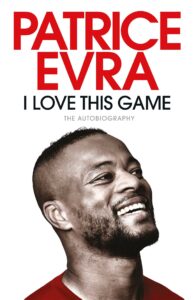
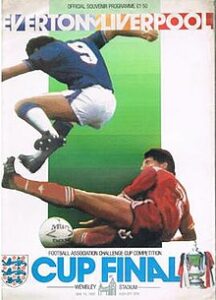
 FBR: Changing Ends: A Season in Non-League Football was your first football book. What was the driving force for writing it?
FBR: Changing Ends: A Season in Non-League Football was your first football book. What was the driving force for writing it? FBR: What is the inspiration for your latest book, British Football’s Greatest Grounds: One Hundred Must-See Football Venues?
FBR: What is the inspiration for your latest book, British Football’s Greatest Grounds: One Hundred Must-See Football Venues?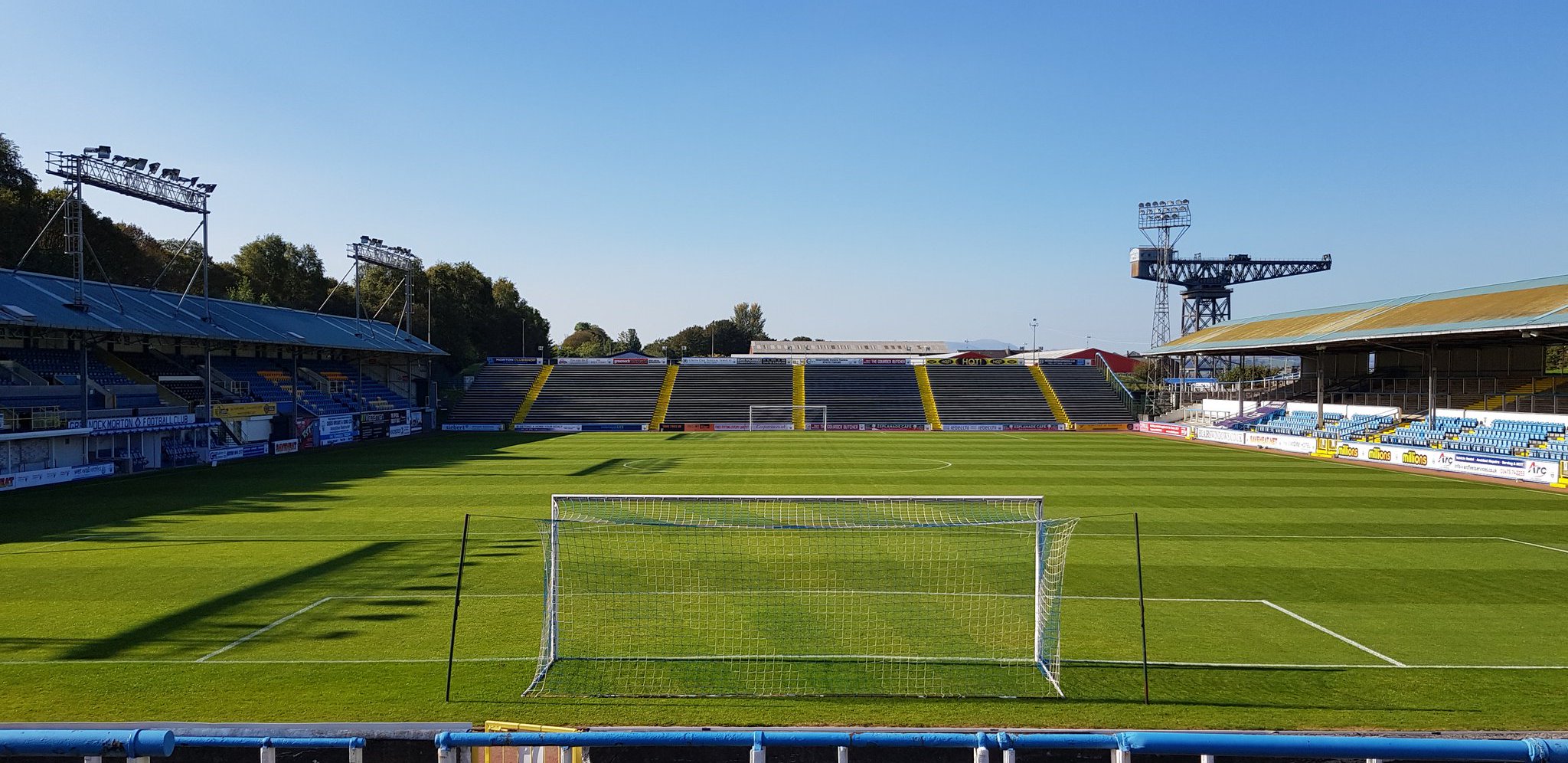
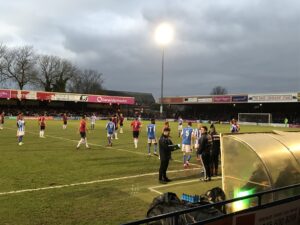
 Warren Dudley (WD): My first game was a 4-1 win for Brighton over Manchester City in around 1981 I think (Editors Note: 03 October 1981 – League Division One: Brighton beat City 4-1 at the Goldstone Ground). My first very strong football memory is being 3-0 down at half-time in the 1983 FA Cup Final Replay against Manchester United. I sat in my bedroom aged ten and burst into tears…that’s when it all started.
Warren Dudley (WD): My first game was a 4-1 win for Brighton over Manchester City in around 1981 I think (Editors Note: 03 October 1981 – League Division One: Brighton beat City 4-1 at the Goldstone Ground). My first very strong football memory is being 3-0 down at half-time in the 1983 FA Cup Final Replay against Manchester United. I sat in my bedroom aged ten and burst into tears…that’s when it all started.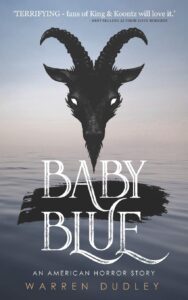 FBR: You have previously written a book, “Baby Blue: An American horror story” and now this football related story. How did you come to make the transition between two different genres?
FBR: You have previously written a book, “Baby Blue: An American horror story” and now this football related story. How did you come to make the transition between two different genres?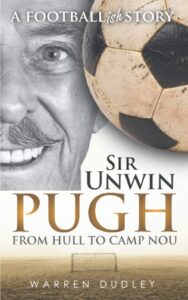 FBR: What was the inspiration for writing the Sir Unwin Pugh book?
FBR: What was the inspiration for writing the Sir Unwin Pugh book? Following the success of the first two Jarrod Black novels,
Following the success of the first two Jarrod Black novels,  (FBR): Has it allowed for more reading and writing? If so, what has been a stand-out read and what have you been writing?
(FBR): Has it allowed for more reading and writing? If so, what has been a stand-out read and what have you been writing?
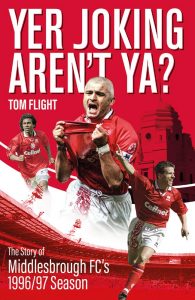 As football in the Premier League and the Championship prepares to return after the COVID-19 outbreak, titles, promotions, and relegations will be fought for behind closed doors. For Middlesbrough, the remaining nine games are vital as they look to ensure their survival in the Championship. Ahead of this unusual end of season, FBR caught up with Tom Flight (TF) who has released a book about an incredible season in the Boro’s history.
As football in the Premier League and the Championship prepares to return after the COVID-19 outbreak, titles, promotions, and relegations will be fought for behind closed doors. For Middlesbrough, the remaining nine games are vital as they look to ensure their survival in the Championship. Ahead of this unusual end of season, FBR caught up with Tom Flight (TF) who has released a book about an incredible season in the Boro’s history.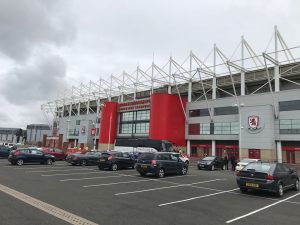 (FBR): In the first season back in the Premier League, Middlesbrough finished 12th, was there a sense of optimism at the start of the 1996/1997 season?
(FBR): In the first season back in the Premier League, Middlesbrough finished 12th, was there a sense of optimism at the start of the 1996/1997 season? Football is a game that is not just about the elite at the top of the professional pyramid. Up and down the country on weekends during the season, park pitches ring to the sound of players of all shapes, sizes and abilities giving it their all at the grassroots level. Peter Roberts has recorded that story from his perspective in his book, Park Life: Four seasons of Rhondda football, and ahead of our review of it, the FBR team caught up with him.
Football is a game that is not just about the elite at the top of the professional pyramid. Up and down the country on weekends during the season, park pitches ring to the sound of players of all shapes, sizes and abilities giving it their all at the grassroots level. Peter Roberts has recorded that story from his perspective in his book, Park Life: Four seasons of Rhondda football, and ahead of our review of it, the FBR team caught up with him.